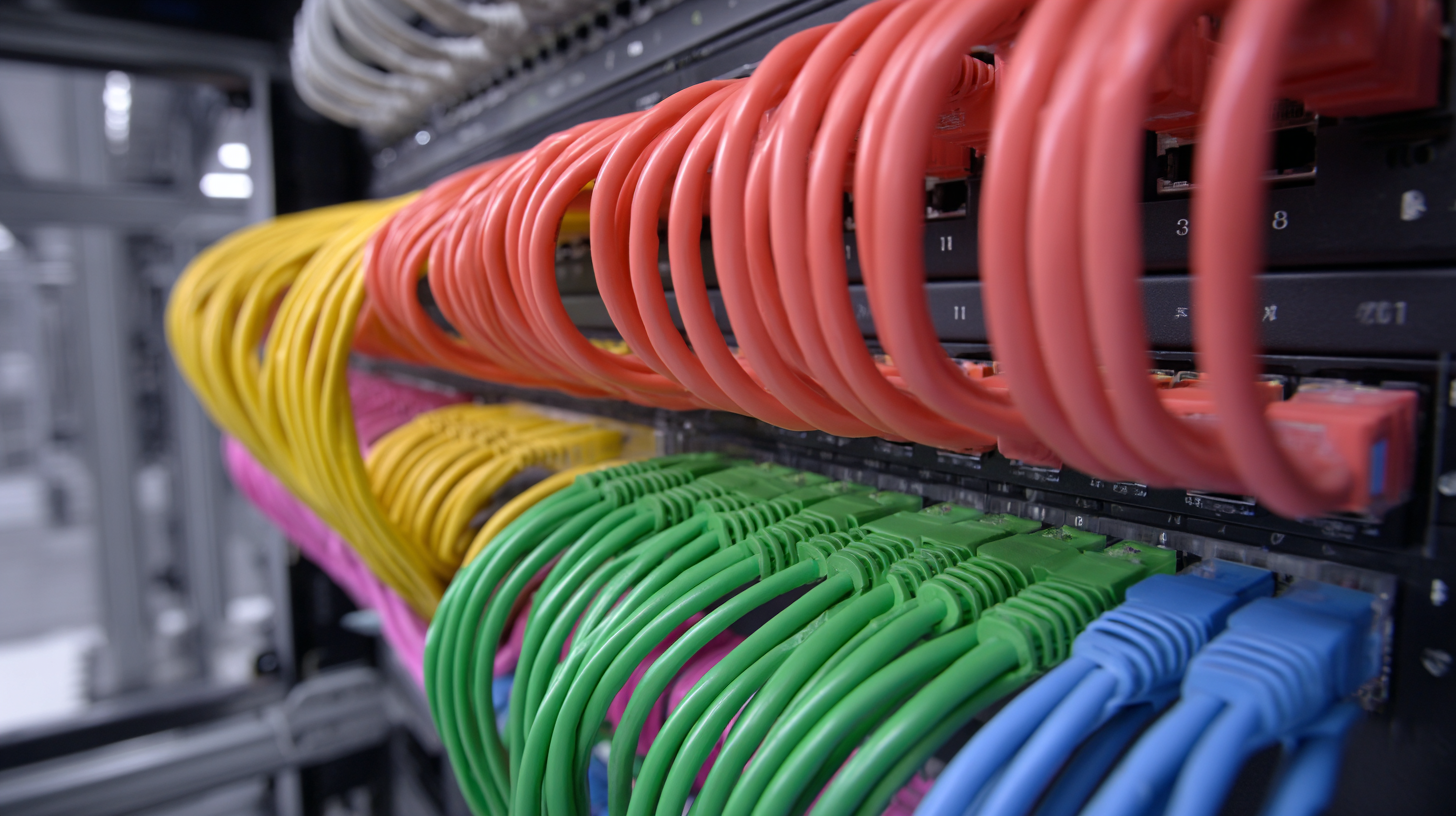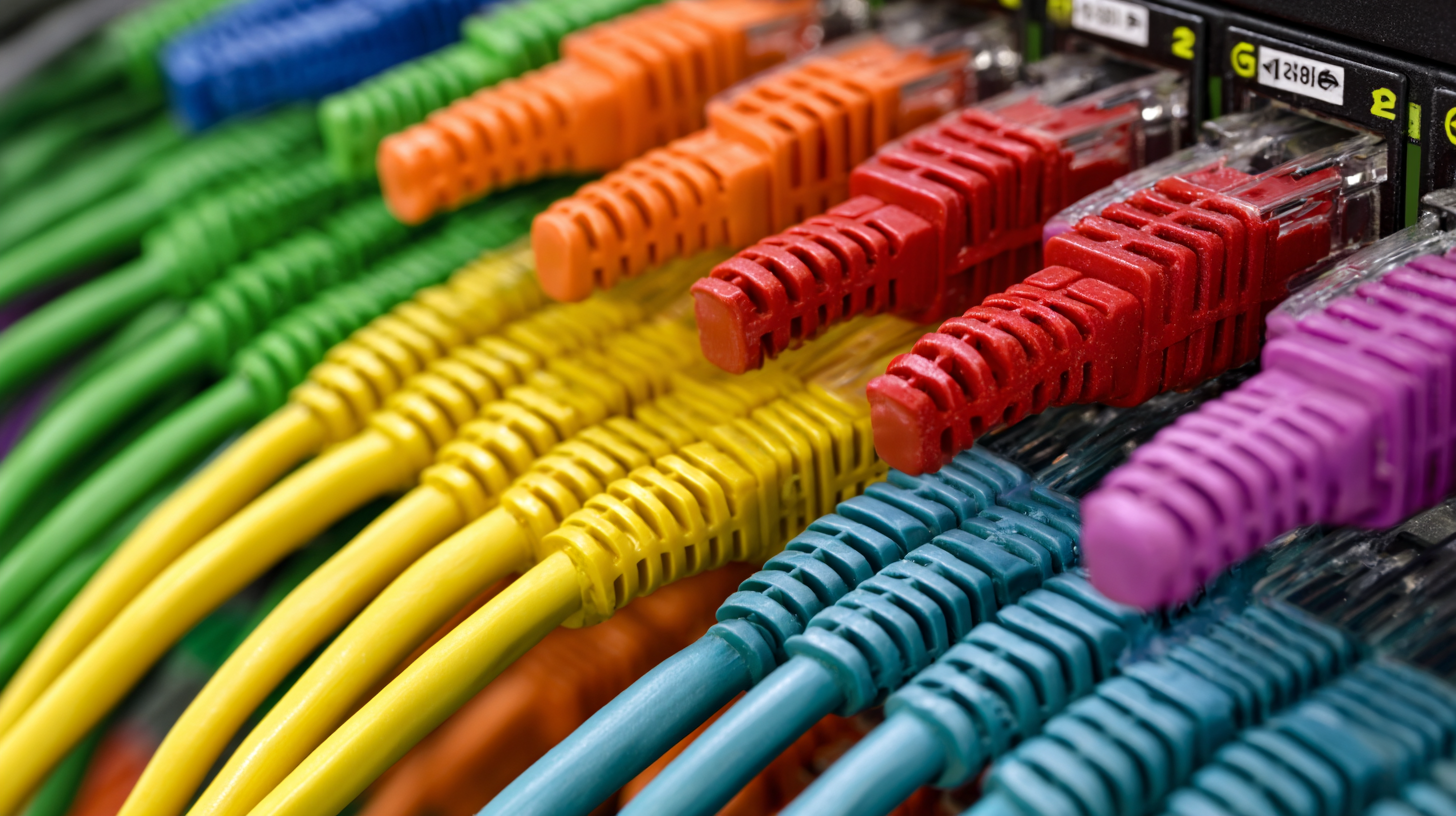Understanding the Impact of Cat 6A Cables on Network Performance and Future-Proofing Your Business
In today’s rapidly advancing technological landscape, businesses must prioritize network performance to stay competitive and efficient. One vital component in achieving optimal connectivity is the use of Cat 6A cables. These high-performance Ethernet cables offer enhanced bandwidth capabilities and reduced crosstalk compared to their predecessors, making them an ideal choice for organizations looking to future-proof their network infrastructure. As companies increasingly rely on cloud services, video conferencing, and data-intensive applications, understanding the impact of Cat 6A cables on network performance becomes essential. This guide will explore the numerous benefits of incorporating Cat 6A cables into your existing infrastructure and provide actionable insights on how to leverage these advanced cables to not only enhance current network performance but also secure your business’s technological readiness for the future.

Advantages of Cat 6A Cables for High-Speed Data Transmission
The rise of high-speed data transmission has made Cat 6A cables an essential component for modern businesses looking to future-proof their network infrastructure. Recent reports indicate that demand for high-performance cabling solutions is increasing significantly, with data center interconnectivity cables experiencing value increases of over five times. This surge highlights the critical role of Cat 6A cables in facilitating faster data transfer rates and improving overall network efficiency.

Cat 6A cables are designed to support 10 Gigabit Ethernet over longer distances, making them ideal for data-intensive applications. According to industry studies, utilizing Cat 6A can reduce latency and enhance bandwidth capacity, enabling companies to accommodate growing data traffic. This adaptability is particularly relevant in a landscape where remote work and cloud computing are becoming the norm. As organizations invest in robust networking solutions, the scalability of Cat 6A cables positions them as a strategic choice for businesses aiming to optimize their performance in an increasingly digital economy.
How to Assess Your Current Network Infrastructure for Upgrades
Assessing your current network infrastructure is crucial for determining whether an upgrade to Cat 6A cables is necessary. Start by examining the existing cabling system, including the type of cables currently in use, their age, and their performance capabilities. Check for any signs of wear or damage, as these can significantly affect the speed and reliability of your network. Additionally, consider the bandwidth requirements of your business; if your operations have outgrown the capabilities of older cabling standards, it may be time to make the transition to Cat 6A.
Next, evaluate the number of devices connected to your network and the overall traffic they generate. This will help you understand if your current infrastructure can handle future demands. Conducting a performance test will provide insights into your network's speed and latency, informing you whether you experience any bottlenecks. If you find that your network struggles to support high data transmission rates or experiences significant downtimes, upgrading to Cat 6A cables could enhance performance while also future-proofing your business against evolving technology needs.
Steps to Install Cat 6A Cables for Optimal Network Performance
When it comes to optimizing network performance, the installation of Cat 6A cables is a crucial step for businesses looking to future-proof their operations. Cat 6A cables provide enhanced speed and increased bandwidth, enabling systems to support data-intensive applications and high-speed internet connections. To achieve optimal network performance, meticulous installation practices must be followed, ensuring that cables are properly terminated and routed without unnecessary bends or interference.

Proper installation begins with assessing the layout of the existing infrastructure and determining the most efficient pathways for the cabling. Utilizing high-quality connectors and following industry standards for Ethernet wiring will mitigate potential performance issues. Additionally, ensuring adequate separation from electrical cabling can help to reduce electromagnetic interference, further enhancing the reliability of network connections. By taking these steps during installation, businesses can ensure that their Cat 6A cabling supports current demands while also being robust enough to handle future technological advancements in networking.
Future-Proofing Strategies: Integrating Cat 6A into Your Business
As businesses evolve in an increasingly digital landscape, future-proofing strategies become crucial for sustaining network performance and growth. Integrating Category 6A (Cat 6A) cables into your infrastructure can significantly enhance bandwidth capabilities, allowing for faster data transmission and reduced latency. With its support for 10 Gigabit Ethernet over longer distances, Cat 6A ensures your network can handle current demands while accommodating future advancements in technology.
**Tips for Integration:**
When incorporating Cat 6A cables, start by assessing your current network layout to identify areas for upgrade. Consider investing in high-quality connectors and accessories to maximize the benefits of your new cabling system. Additionally, ensuring proper installation and adhering to best practices can prevent potential signal degradation and enhance overall reliability.
To further future-proof your business, focus on scalability. Cat 6A not only meets today's requirements but also positions your network to adapt easily to upcoming technologies. Engage with technical experts during the planning phase to design a flexible network architecture that can accommodate additional bandwidth needs without extensive overhauls in the years to come.
Best Practices for Maintaining and Testing Cat 6A Cable Systems
When maintaining and testing Cat 6A cable systems, adhering to best practices is crucial for optimizing network performance. One fundamental strategy is to implement comprehensive network diagrams that accurately represent the cable layout, devices, and connections. This visualization helps in identifying potential bottlenecks and planning for future expansions seamlessly.
In addition to proper documentation, focus on effective cable management to avoid clutter and ensure cable longevity. Use Velcro straps or cable trays to secure cables, preventing damage from tangling or excessive bending. Moreover, keeping cables as far away as possible from heat sources and ensuring adequate cooling in network rooms can significantly reduce the risk of performance degradation.
Tips: Regularly conduct tests on your Cat 6A assemblies to verify they meet the required specifications. Utilizing a certified cable tester can help detect issues early on. Also, keep in mind that not all cables marketed as Cat 6 or Cat 6A truly meet those standards. Always source cables from reputable suppliers to ensure quality and reliability.
Related Posts
-

7 Essential Tips for Choosing the Best Cat 6 Bulk Cable for Your Network Needs
-

How to Choose the Right Patch Panel for Your Networking Needs
-

7 Digital Strategies to Optimize Your Network Cable Installation for Peak Performance
-

How to Choose the Right Network Patch Panel for Your Installation Needs
-

What is the Importance of Network Fiber Optic Cable in Modern Communication
-

Ultimate Guide to Choosing the Right Network Patch Cable for Your Home Setup
